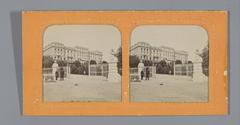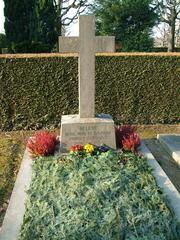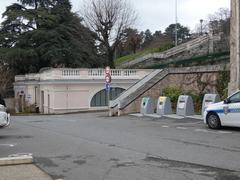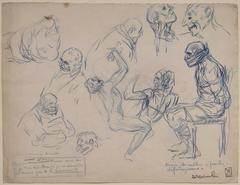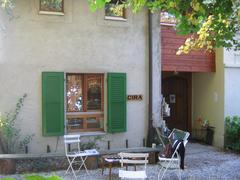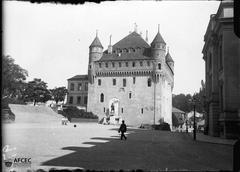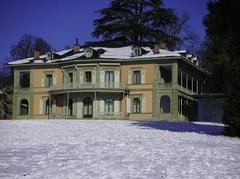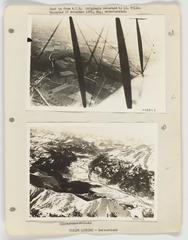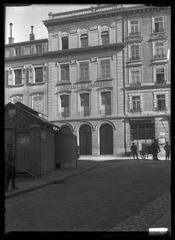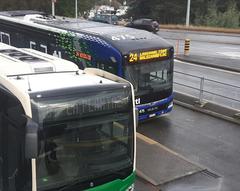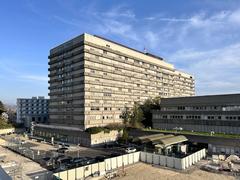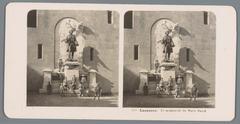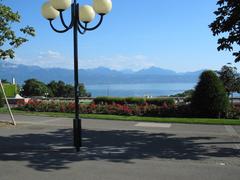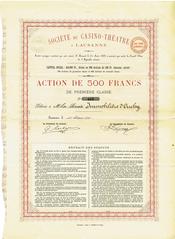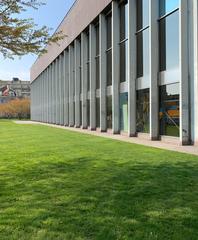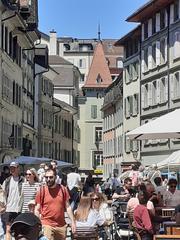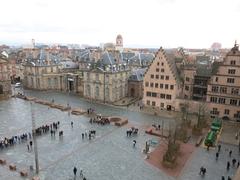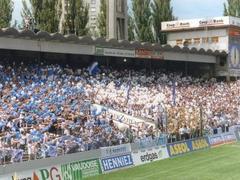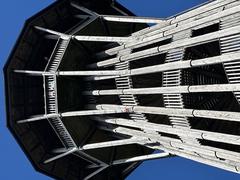
Cantonal Botanical Museum and Gardens Lausanne: Visiting Hours, Tickets, and Comprehensive Visitor Guide
Date: 03/07/2025
Introduction
Nestled atop Montriond Hill in Lausanne, Switzerland, the Cantonal Botanical Museum and Gardens is a celebrated institution blending natural beauty, scientific research, and cultural heritage. With a legacy dating back to the late 16th century, the gardens have evolved into a living repository of over 6,000 plant species, complemented by one of Switzerland’s largest herbaria and a robust program of educational activities. This guide provides a detailed overview—including visiting hours, ticket information, accessibility, highlights, and travel tips—to help you plan an enriching visit to this botanical treasure.
For the most current details, always consult official sources such as Naturéum Lausanne, Lausanne Musées, and MySwitzerland.
Table of Contents
- Introduction
- Historical Overview
- Garden Layout & Thematic Zones
- Museum & Scientific Collections
- Visiting Hours & Admission
- Accessibility & Visitor Amenities
- Guided Tours & Educational Activities
- Travel Tips & Nearby Attractions
- Frequently Asked Questions (FAQ)
- Visuals & Media Suggestions
- Conclusion & Call to Action
- References
Historical Overview
Origins and Evolution
The roots of botanical study in Lausanne trace back to the late 17th century, with the first private gardens serving as early centers for plant collection and study (Discover Walks). Institutional development began in the 19th century, when the botanical museum was established within the Natural History Museum in 1824 (Wikipedia). By 1844, the herbarium had a dedicated curator, and a botanical library was founded, which now houses about 35,000 books and over 800 periodicals.
A major milestone occurred in 1873 with Baron Albert de Büren’s donation of 1,700 plants, establishing the canton’s first official botanical garden. The collection relocated several times before settling permanently in 1946 on Montriond Hill, designed by architect Alphonse Laverrière in collaboration with botanist Florian Cosandey and gardener Charles Lardet (Natureum). The garden’s design harmoniously integrates rock gardens, cascading waterfalls, and thematic plant zones within the natural landscape.
Recent Developments
In 1964, the herbarium found its permanent home in the garden, and today it contains over a million specimens, including historically significant collections (Discover Walks). In 2023, the institution joined Lausanne’s Naturéum, enhancing its research and public engagement capacities (Wikipedia), and the gardens are now recognized as a national cultural asset (Lausanne Musées).
Additionally, the museum manages La Thomasia, Switzerland’s oldest alpine garden near Bex, specializing in alpine flora and conservation (Discover Walks).
Garden Layout & Thematic Zones
Entrance & Orientation
Visitors are welcomed by clear signage and accessible paths, with maps available at the reception (Lausanne Tourisme). Benches and shaded areas throughout the garden provide ample opportunities for rest and contemplation.
Living Collections
- Alpine Rock Garden: Showcasing Switzerland’s mountainous flora with carefully arranged rocks, gravel beds, and endemic species like gentians and edelweiss.
- Regional Flora: Organized by habitat, this section highlights the biodiversity of Vaud and Switzerland, with informative signage about native and endangered species.
- Thematic Beds: Include medicinal plants, ornamental species, and systematic beds arranged by plant family.
- Arboretum: Features diverse trees and shrubs, with notable specimens such as Swiss conifers, European beeches, and Asian maples.
Greenhouses & Indoor Displays
- Tropical & Subtropical Plants: Lush displays of ferns, orchids, bromeliads, and economically important crops.
- Succulents & Arid Zone Plants: Cacti and drought-tolerant species illustrate adaptation to extreme environments.
- The greenhouses are open year-round, providing a verdant retreat even in winter.
Educational & Interactive Areas
- Children’s Discovery Area: Hands-on exhibits and activities for young visitors.
- Interpretive Trails: Multilingual panels and QR codes offer in-depth botanical information for self-guided tours.
Seasonal Highlights
The garden’s diverse collections ensure interest in every season: spring bulbs, summer blooms, autumn foliage, and winter greenhouse displays. Special exhibitions and themed plantings are organized throughout the year (Lausanne Musées).
Museum & Scientific Collections
Herbarium
One of the largest in Switzerland, the herbarium preserves specimens from the region and worldwide, supporting research in taxonomy, ecology, and conservation.
Research Facilities
Researchers utilize these collections and the botanical library for studies in plant diversity and conservation, often in collaboration with Swiss and international partners (myswitzerland.com).
Conservation Initiatives
The gardens actively protect rare and endangered Swiss flora, with dedicated beds and propagation programs (Lausanne Musées).
Visiting Hours & Admission
- April to September: 9:00 AM – 7:00 PM
- October to March: 9:00 AM – 5:00 PM
Check the official website for updates and special event hours.
Admission: Entry to the gardens is free; some exhibitions or guided tours may require a nominal fee.
Accessibility & Visitor Amenities
- Wheelchair & Stroller Access: Paved paths and ramps throughout.
- Restrooms: Accessible facilities on-site.
- Multilingual Information: French, English, and German signage and brochures.
- Café & Shop: Seasonal café, picnic areas, and gift shop with botanical books, seeds, and souvenirs.
- Travel: 15-minute walk from Lausanne’s main train station; buses 7 and 22 stop nearby (Lausanne Tourisme).
Guided Tours & Educational Activities
- Guided Tours: Regularly scheduled, focusing on themes such as alpine flora, medicinal plants, and conservation.
- Workshops & Lectures: For all ages, with special activities during school holidays and events like “Fête de la Nature” (Fête de la Nature).
- Group Visits: Customized tours available for schools and organizations; advance booking recommended.
Travel Tips & Nearby Attractions
- Best Time to Visit: Spring and summer for floral displays; autumn for foliage; winter for greenhouse collections.
- Combine Your Visit: Explore nearby Lausanne Cathedral, the Olympic Museum, and Parc de Milan for a full day of cultural and natural attractions.
- Photography: Allowed for personal use; early morning and late afternoon offer optimal light.
Frequently Asked Questions (FAQ)
Q: What are the opening hours?
A: April–September: 9:00–19:00; October–March: 9:00–17:00.
Q: Is there an entry fee?
A: Entry to the outdoor gardens is free; some events or tours may have a fee.
Q: Are guided tours available?
A: Yes, regularly; check schedules on the official website.
Q: Is the garden accessible to wheelchairs and strollers?
A: Yes, all main paths and facilities are accessible.
Q: Are pets allowed?
A: Only service animals are permitted to protect plant collections.
Visuals & Media Suggestions
- Images: Use high-quality photos of the entrance, alpine rock garden, greenhouses, and seasonal displays.
- Alt Text Examples: “Entrance to Cantonal Botanical Museum and Gardens Lausanne,” “Alpine Rock Garden in Spring,” “Tropical Greenhouse Interior.”
- Virtual Tours: Consider embedding virtual tours and interactive maps from the official website.
Conclusion & Call to Action
The Cantonal Botanical Museum and Gardens in Lausanne offers an immersive journey through centuries of botanical exploration and conservation. With free entry, accessible facilities, and a wealth of plant diversity, it is an ideal destination for families, students, researchers, and all who appreciate the natural world. For up-to-date information, event calendars, and digital resources, visit the official Cantonal Botanical Museum website or the Lausanne Tourism portal.
Plan your visit today—download the Audiala app for interactive guides, follow the gardens on social media, and discover more about Lausanne’s natural and cultural treasures.
References
- Discover Walks
- myswitzerland.com
- Wikipedia
- Lausanne.ch
- Lausanne Tourisme
- Natureum
- Lausanne Musées
- Secret Attractions
- mcah.ch
- Touring Switzerland
- IbnBattuta Travel
- Fête de la Nature

















































